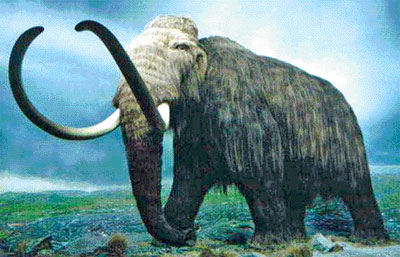|
Wooly mammoths may roam
again!
Japanese scientist and Russian team intend cloning a mammoth in five
years.
Prof. Akira Iritani of Japan and a team of Russian researchers are
preparing to clone a healthy mammoth within five years.
They intend to resurrect the species after obtaining tissue in the
summer of 2011 from the carcass of a mammoth preserved in a Russian
mammoth research laboratory. Afterwards, they will insert the nuclei of
mammoth cells into an elephant’s egg cells from which the nuclei have
been removed. The result will be an embryo containing mammoth genes.
Then they will insert the embryo into an elephant’s womb. The gestation
period will last two years, after which the team hopes a baby mammoth
will be born.Mammoths have been extinct for about 10,000 years.

Mammoths and mammoth remains have been found under Russia’s Siberian
permafrost. There has been speculation about cloning mammoths among
Russian and Japanese scientists for several years now, but some
dismissed the notion, saying the whole cells required for cloning would
have burst under the freezing conditions. Now apparently a technological
breakthrough has been made. Some estimate that 150 million mammoth
remains lie beneath the permafrost in Siberia.
Japanese scientists believe they have the technology and know-how to
create a living woolly mammoth.
The key is soft tissue. Unlike older extinct species like the
dinosaur family, scientists have been able to dig up entire frozen
mammoth carcasses in Siberia, most of which still have soft tissue with
cells containing DNA.The key breakthrough is a new technique that allows
the scientists to extract DNA from frozen cells. Previously, frozen
cells were thought to be too damaged (by the freezing process) to use
for things like cloning.“If a cloned embryo can be created, we need to
discuss, before transplanting it into the womb, how to breed (the
mammoth) and whether to display it to the public, Iritani said.
“After the mammoth is born, we will examine its ecology and genes to
study why the species became extinct and other factors.”There is debate
among the science community how exactly mammoths went extinct.Some
believe that humans hunted the creatures to extinction while others
believe that climate change did the furry elephants in.
Courtesy: AFP and
physorg.com |

